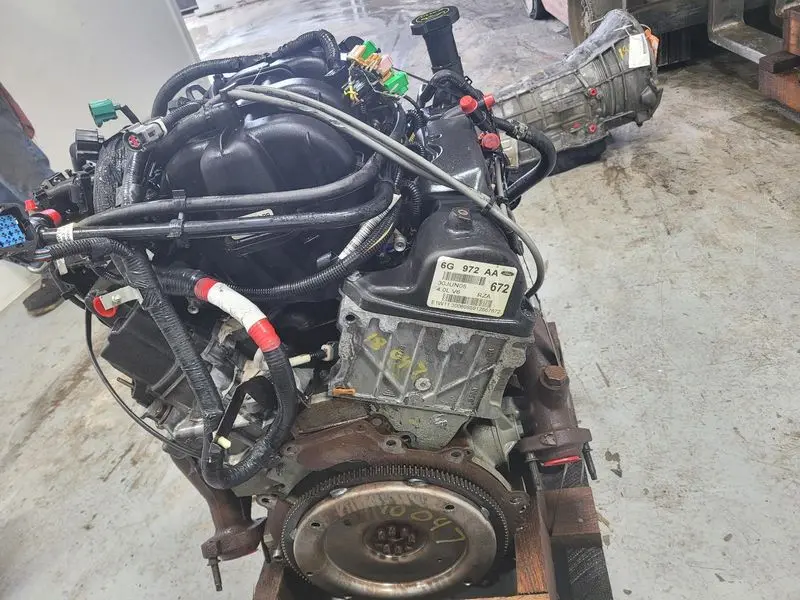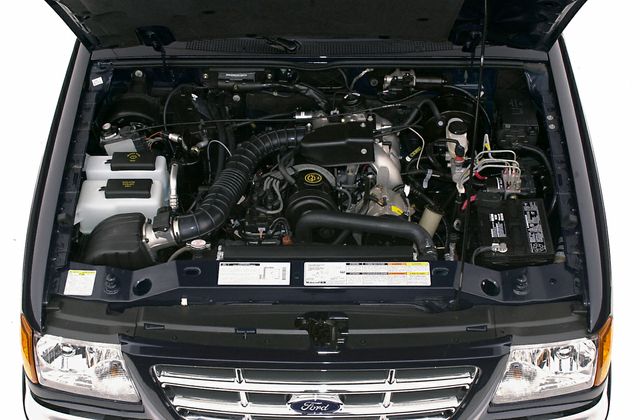How the 2.2 Ford Ranger Engine Stands Out for Durability and Power in Tough Conditions
How the 2.2 Ford Ranger Engine Stands Out for Durability and Power in Tough Conditions
Blog Article
Recognizing the Basics of Auto Engines: Features, features, and types

Review of Vehicle Engines
An auto engine offers as the heart of a lorry, transforming gas into power to thrust it onward. This detailed system makes up different components that operate in unison to make sure optimum performance and performance. The basic procedure of an auto engine includes the internal combustion procedure, where fuel and air are blended, ignited, and expelled to produce power.
The engine's style can significantly influence its performance, gas efficiency, and discharges. Key components consist of the cylinder block, pistons, crankshaft, and camshaft, each playing a crucial role in the engine's total function.
Along with these components, engines frequently use numerous systems such as gas shot, ignition, and cooling systems to enhance efficiency and long life. Recognizing the basic technicians of cars and truck engines is vital for doing and diagnosing concerns upkeep, ultimately adding to the automobile's dependability and efficiency gradually.

Sorts Of Automobile Engines
Vehicle engines can be classified into a number of types based on their style, fuel type, and functional principles. 2.2 ford ranger engine. The most typical classifications include inner burning engines (ICE), electrical engines, and crossbreed engines
Internal combustion engines, which can be more split right into gasoline and diesel motor, run by stiring up a fuel-air combination to generate power. Gasoline engines are usually lighter and smoother, while diesel motor are much more fuel-efficient and deal higher torque.
Electric engines utilize electrical power saved in batteries to power an electrical motor, giving instantaneous torque and absolutely no exhausts during operation. As technology developments, electric automobiles (EVs) are progressively coming to be prominent for their ecological advantages and reduced running expenses.
Hybrid engines incorporate elements of both inner combustion and electric engines, permitting for adaptable power resources and boosted gas performance. They can operate in numerous modes, using either the gasoline engine, the electrical motor, or both at the same time.
Each kind of engine has unique advantages and negative aspects, affecting their application in various automobile types and market segments, from small automobiles to durable vehicles. Comprehending these types is vital for making informed decisions regarding car selection and efficiency expectations.
Engine Features Discussed
Comprehending engine functions is critical for realizing how vehicles run successfully. At the core of any type of internal combustion engine exists the essential process of transforming gas right into power. This procedure starts with the consumption stroke, where air and gas are attracted right into the burning chamber. Following this, the compression stroke compresses the air-fuel combination, boosting its temperature and stress.
The ignition happens following, igniting the mix and developing a rapid development of gases. This pressure drives the piston down throughout the power stroke, which eventually converts into the rotational motion of the crankshaft. The exhaust stroke then removes the invested gases from the chamber, making way for a new cycle to commence.
Along with these main functions, engines likewise incorporate systems that take care of cooling and lubrication, ensuring optimal operational temperatures and minimizing rubbing between relocating components. This intricate interplay of features allows the engine to generate the power essential for vehicle propulsion while maintaining efficiency and integrity. Understanding these features supplies beneficial understanding right into the complexities of automotive design and enhances the capability to identify and address engine-related concerns properly.
Trick Engine Attributes
Engine layout includes several crucial attributes that substantially influence efficiency, use this link efficiency, and durability. Among the most essential elements is the engine configuration, which includes inline, V-type, and level layouts. Each arrangement impacts the engine's power, balance, and size outcome, thereby influencing general vehicle characteristics.
Another vital attribute is the engine displacement, referring to the total quantity of all cyndrical tubes. Larger variations normally generate even more power but might endanger fuel performance. Engine materials additionally play an essential role; high-strength and lightweight materials, such as aluminum and magnesium alloys, improve efficiency without adding extreme weight.
The type of fuel injection system used-- such as multi-port or straight shot-- influences combustion performance and emissions. Turbo charging and turbocharging are features that increase engine efficiency by compeling additional air into the combustion chamber, increasing power output without considerably enhancing engine size.
Last but not least, the presence of sophisticated engine monitoring systems enhances fuel-air mix and ignition timing, contributing to smoother operation and much better fuel economic situation. Jointly, these functions define an engine's abilities, establishing the structure for its efficiency and longevity in an affordable vehicle landscape.
Maintenance Tips for Engines
Proper engine maintenance is crucial for ensuring optimal performance and long life, as overlooking regular care can lead to significant problems down the line. To keep your engine effectively, begin with normal oil modifications, usually every 3,000 to 7,500 miles, depending upon the kind of oil utilized. Fresh oil lubes engine elements, lowering friction and wear.
Additionally, keeping an eye on coolant levels is essential to avoid overheating. Guarantee that the coolant is covered up and is in great condition to preserve efficient temperature level law. On a regular basis change and examine air and gas filters, as blocked filters can impede airflow and fuel delivery, jeopardizing engine effectiveness.
Furthermore, pay focus to stimulate plugs and ignition systems. Faulty or worn ignition system can lead to misfiring and minimized efficiency. Checking the battery terminals and connections for rust is additionally vital, as a weak battery can affect engine beginning.

Verdict
In recap, an extensive understanding of vehicle engines incorporates numerous kinds, features, and key features that considerably influence car performance. Internal burning engines, in addition to hybrid and electric alternatives, demonstrate diverse mechanisms for energy conversion. 2.2 ford ranger engine. Identifying the vital features, such as intake and exhaust cycles, alongside crucial engine attributes like setup and gas injection systems, outfits auto proprietors with the knowledge essential for efficient maintenance and operation, inevitably boosting lorry durability and performance
An automobile engine serves as the heart of a vehicle, converting gas right into mechanical energy to thrust it ahead. The basic operation of a cars and truck engine entails the internal combustion process, in which gas and air are combined, fired up, and gotten rid of to produce power.
Frequently evaluate and change air and fuel filters, as blocked filters can prevent airflow and gas shipment, jeopardizing engine performance. - 2.2 ford ranger engine
In recap, a detailed understanding of automobile engines encompasses various that site kinds, functions, and essential functions that dramatically influence automobile performance. Identifying the important functions, such as intake and exhaust cycles, along with important engine functions like setup and gas shot systems, furnishes car proprietors with the knowledge necessary for efficient maintenance and procedure, eventually boosting vehicle durability and effectiveness.
Report this page